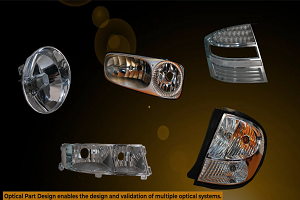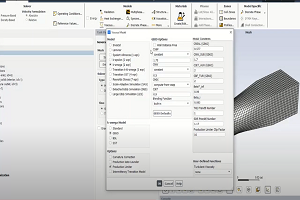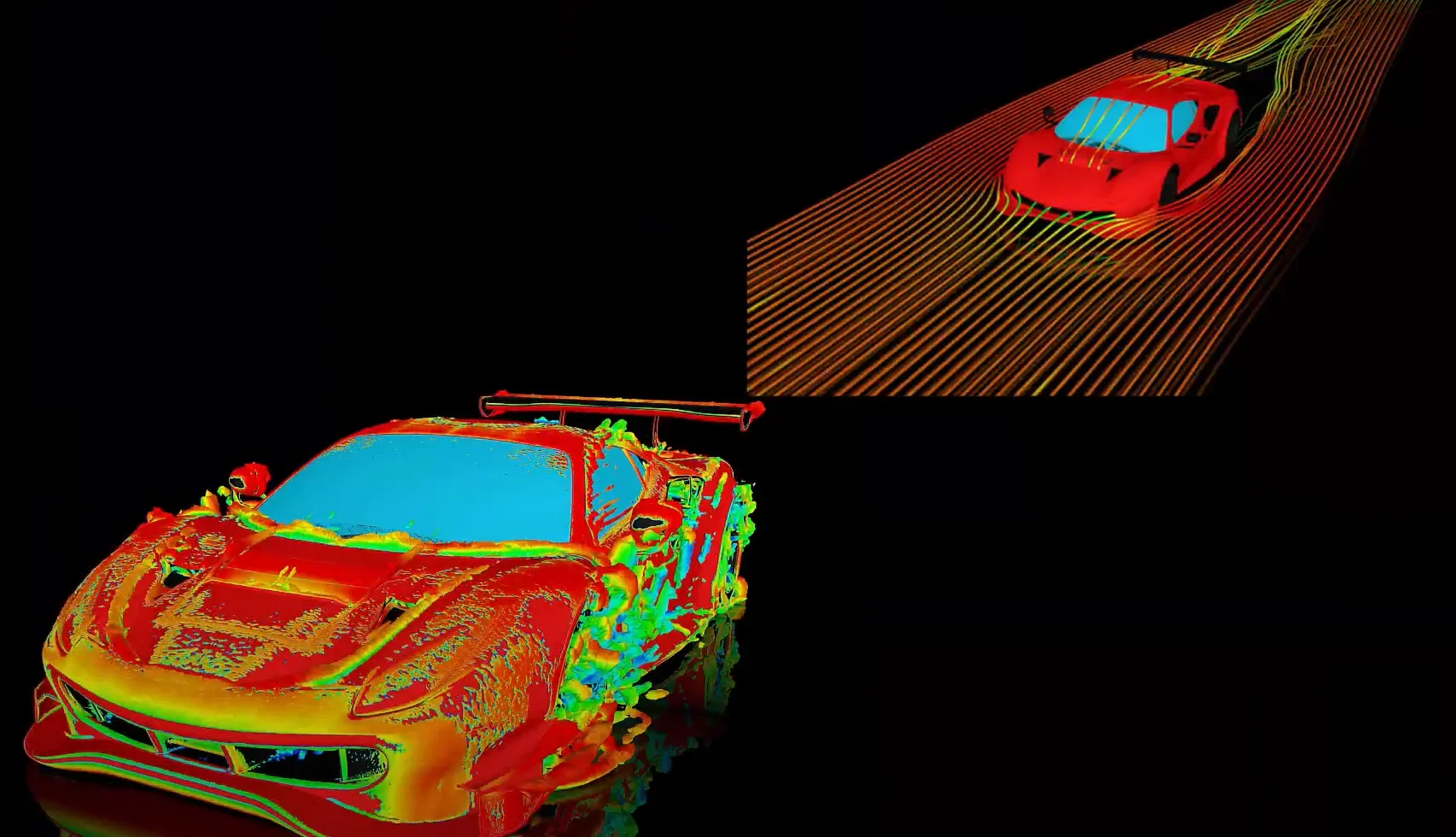-
-
January 31, 2023 at 8:54 am
 FAQParticipant
FAQParticipantMixing taskは、”adaptive meshing for moving parts”でアダプティブメッシュをかけたメッシュを使用することが出来ません。 使用するには、F.E.M. task の流れ計算時にCSVファイルの出力設定をしておきMixing task設定前に、 Convert old csv filesから csvファイルと細分化されたメッシュファイルを作成する必要があります。 主な作業工程 1.F.E.M Taskの流れ計算で csvファイルの結果を出力する Polydataの作業 >Outputs >CSV (Excel) Output 2.流れ計算で出力したcsvファイルの結果をresファイルに変換し、同時に再分割したメッシュファイルを作成します。 変換はPolydataのConvert old csv filesから設定します。 (全領域を細分化するため3Dモデルの場合、大きなメッシュファイルが作られる可能性があります。) Polydataの作業 >Convert old csv files -Single / multiple csv files: 定常と非定常(複数結果)の読み込みが切り変えるる 〇定常計算の場合 -Enter the name of the csv files:流れ計算で出力したCSVファイルを選択 〇非定常計算の場合(csvが複数ある場合) -Enter the prefix of the csv files: 流れ計算で出力したCSVファイルの一つを選択 -Enter range ids. of the csv files: Update Index of first csv file: 最初のcsvファイルを選択 Update Index of last csv file: 最後のcsvファイルを選択 -Enter the domain to refine: 流れ解析領域のメッシュドメインを設定 -Enter the number of steps of refinement: 流れ計算で設定したアダプティブメッシュのmaxdivを入力 -Switch to “identical/different topologies between source and target meshes” ソースメッシュとターゲットメッシュのトポロジが同一または異なる場合を切り替える -Select Outputs: Polyflow outputs (resファイルを作るため) -Save and exit 通常のSave and exit の実行と同じで、出力する物理量の選択ご変換用datファイルが作られます。 (スタンドアローンで起動した場合、Convert and exitになり変換が実行されます。) Workbenchの解析実行を更新すると、”dumpcsv.msh”と”res”ファイルが作られます。 非定常計算で結果が複数のcsvファイルから作成した場合は、csvファイルと同じ数のres.〇が作られます。 Mixing taskの設定は、新たに作られたメッシュファイル ”dumpcsv.msh”とcsvの結果を新しいにメッシュで補間した resファイルを使用します。
-


Introducing Ansys Electronics Desktop on Ansys Cloud
The Watch & Learn video article provides an overview of cloud computing from Electronics Desktop and details the product licenses and subscriptions to ANSYS Cloud Service that are...

How to Create a Reflector for a Center High-Mounted Stop Lamp (CHMSL)
This video article demonstrates how to create a reflector for a center high-mounted stop lamp. Optical Part design in Ansys SPEOS enables the design and validation of multiple...

Introducing the GEKO Turbulence Model in Ansys Fluent
The GEKO (GEneralized K-Omega) turbulence model offers a flexible, robust, general-purpose approach to RANS turbulence modeling. Introducing 2 videos: Part 1 provides background information on the model and a...

Postprocessing on Ansys EnSight
This video demonstrates exporting data from Fluent in EnSight Case Gold format, and it reviews the basic postprocessing capabilities of EnSight.

- Mesh Interfaceで周期境界を設定する方法
- Fluentでのcasとdatファイルの読み込み注意点
- Windowsでバックグラウンド実行時Fluentソルバーの停止とファイル保存
- エラーメッセージ:Signal caught: Abnormal termination について
- CFD-POSTで、最大値と最小値の場所を表示する方法は?
- STLファイルのエクスポートは可能ですか?
- Linux環境でコマンドラインからFluentを起動する方法
- resファイルからモニターデータをcsvで出力する方法
- Fluentから出力されるEnSightフォーマットの拡張子(encas)とEnSightの標準フォーマットの拡張子(case)が違いますが内容に何か違いはありますか。
- Stlファイルを、Solid化するには?
© 2025 Copyright ANSYS, Inc. All rights reserved.


